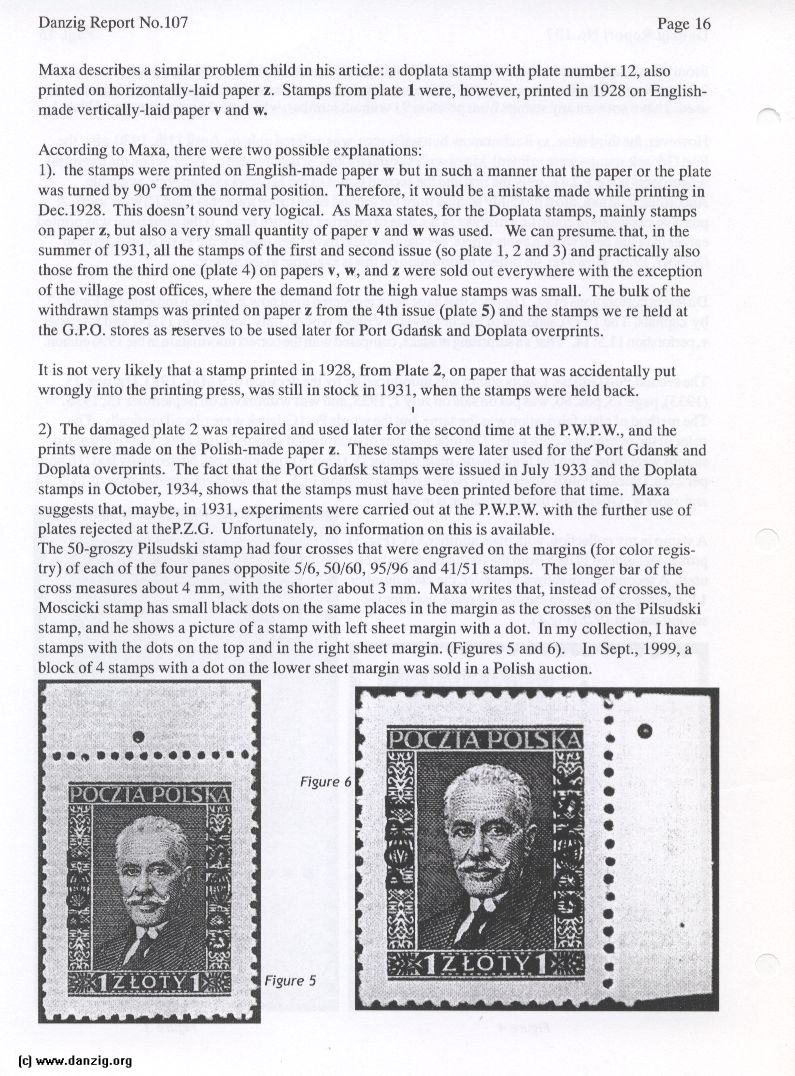
Maxa describes a similar problem child in his article: a doplata stamp with plate number 12, also printed on horizontally-laid paper z. Stamps from plate I were, however, printed in 1928 on English- made vertically-laid paper v and w.
According to Maxa, there were two possible explanations:
1). the stamps were printed on English-made paper w but in such a manner that the paper or the plate was turned by 900 from the normal position. Therefore, it would be a mistake made while printing in Dec.1928. This doesn’t sound very logical. As Maxa states, for the Doplata stamps, mainly stamps on paper z, hut also a very small quantity of paper v and w was used. We can presume. that, in the summer of 1931, all the stamps of the first and second issue (so plate 1, 2 and 3) and practically also those from the third Ofle (plate 4) on papers v, w, and z were sold out everywhere with the exception of the village post offices, where the demand foir the high value stamps was small. The bulk of the withdrawn stamps was printed on paper z from the 4th issue (plate 5) and the stamps we re held at the G.P.O. stores as serves to be used later for Port Gdaitsk and Doplata overprints.
It is not very likely that a stamp printed in 1928, from Plate 2, on paper that was accidentally put wrongly into the printing press, was still in stock in 1931, when the stamps were held back.
2) The damaged plate 2 was repaired and used later for the second lime at the P.W.P.W., and the prints were made on the Polish-made paper z. These stamps were later used for the’ Port Gdank and Doplata overprints. The fact that the Port Gdaifsk stamps were issued in July 1933 and the Doplata stamps in October, 1934, shows that the stamps must have been printed before that time. Maxa suggests that, maybe, in 1931, experiments were carried out at the P.W.P.W. with the further use of plates rejected at thcP.Z.G. Unfortunately, no infonnation on this is available.
The 50-groszy Pilsudski stamp had four crosses that were engraved on the margins (for color regist ry) of each of the four panes opposite 5/6, 50/64), 95/96 and 41/51 stamps. The longer bar of the cross measures about 4 mm, with the shorter about 3 mm. Maxa writes that, instead of crosses, the Moscicki stamp has small black dots on the same places in the margin as the crosses on the Pilsudski stamp, and he shows a picture of a stamp with left sheet margin with a dot. In my collection. I have stamps with the dots on the top and in the right sheet margin. (Figures 5 and 6). In Sept., 1999, a block of 4 stamps with a dot on the lower sheet margin was sold in a Polish auction.
Danzig Report Vol. 1 - Nr. 107 - April - May - June - 2000, Page 17.
Hits: 3886
Added: 28/07/2015
Copyright: 2025 Danzig.org

